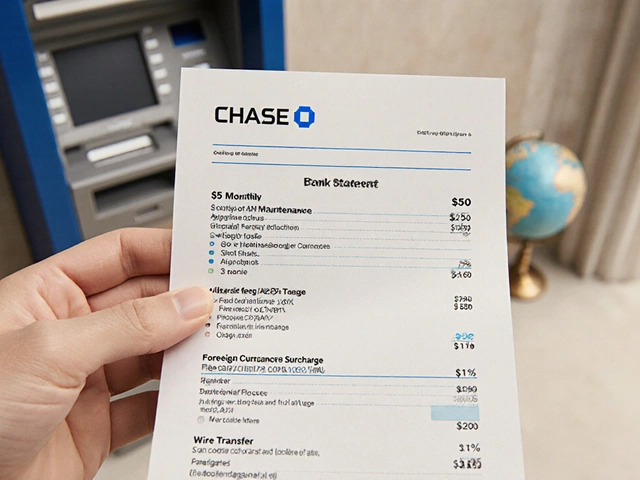
Scouting for the best Indian bank as an NRI? You’re not alone—most of us abroad have wrestled with confusing rules, shady fees, and online banking that barely works outside India. Picking the wrong bank feels like carrying extra luggage you just can’t ditch.
Different banks treat NRIs like VIPs—or sometimes, just a hassle—depending on what you need. Some banks make online banking and remittance a breeze, but others are stuck in 2012. And those hidden charges? They can sneak up on you fast if you aren’t careful. Cut through all the fine print, because the goal is hassle-free access to your money, no matter where life takes you.
This guide zeroes in on what actually matters: Which banks make life simplest if you work or live outside India? You’ll get the stuff you won’t see on an advertisement—like how easy it really is to talk to their support, transfer INR, or close an account if things go south.
- Why NRI Banking Isn’t Business as Usual
- How to Pick Your Best Fit: Major Banks Compared
- Hidden Fees, Remittance Tricks, and Real Digital Perks
- Opening Your Account From Abroad: What to Expect
- Tips and Common Mistakes for NRIs
Why NRI Banking Isn’t Business as Usual
If you’re an NRI, banking in India isn’t just a cut-and-paste job from your old local account. RBI makes sure of that! As soon as you step foot outside India for work or studies, your standard savings account is technically a no-go. Now you need special NRI accounts, each with its own rules.
Most Indians have heard the terms NRE, NRO, and FCNR. But what’s the deal? Here it is, minus the jargon:
- NRE (Non-Resident External) Account: Held in rupees, lets you park overseas earnings in India. Fully repatriable, so you can send funds back abroad with no issues. No Indian taxes on interest, which is a win.
- NRO (Non-Resident Ordinary) Account: Also rupee-based, but made for income earned in India (like rent or dividends). Repatriation is possible but with limits, and you’ll pay tax on interest here.
- FCNR (Foreign Currency Non-Resident) Account: This one is for people who want to avoid currency swings. You park your money in major foreign currencies, not rupees, and the funds plus interest can move in and out of India hassle-free.
Banks have to stick to these RBI rules, and that means more paperwork, stricter KYC, and sometimes a head-scratching approval process. You’ll need to show your passport, visa, and overseas address. Some banks let you do it all from abroad, others want you to show up in person at least once.
It’s not just account opening. As a best indian bank for nris hunter, you also have to keep an eye on international transfer limits, currency exchange rates, and tax rules. Even basic stuff, like updating your Indian address, can get stuck if the bank doesn’t have proper NRI processes in place. The gap between a regular Indian account and an NRI account is bigger than most people think.
Check out these typical differences between NRE, NRO, and FCNR accounts:
| Account Type | Currency | Tax on Interest | Repatriation |
|---|---|---|---|
| NRE | INR (from foreign earnings) | No | Full |
| NRO | INR (from earnings in India) | Yes | Limited |
| FCNR | USD, GBP, EUR, etc. | No | Full |
So, before you pick a bank, know what kind of account you actually need. One-size-fits-all won’t work here—your situation shapes your options.
How to Pick Your Best Fit: Major Banks Compared
NRI banking isn’t a one-size-fits-all thing. The right bank can honestly save you time, money, and a lot of stress. Here’s how the big names stack up if you care about smooth tech, decent customer service, and no-nonsense fees.
ICICI Bank makes life easy for NRIs with probably the best online account opening tools. They let you sign up from over 100 countries, and their Money2India service is famous for fast, cheap remittances. At the same time, their NRI Pro team offers support that actually picks up the phone. HDFC Bank is right behind—friendly for investments, good mobile app, but they’re a bit stricter with their paperwork if you’re opening a new account overseas.
| Bank | Account Opening | Remittance Charges | Support for NRIs | Minimum Balance |
|---|---|---|---|---|
| ICICI Bank | Online (All major countries) | Zero-fee for some transfers | Dedicated NRI hotline | ₹10,000 (in metro branches) |
| HDFC Bank | Online/Branch | Competitive | 24x7 phone/email | ₹10,000 |
| State Bank of India (SBI) | Online/Branch, slower KYC | Low but charges on most transfers | Mixed reviews on NRI desks | ₹3,000 |
| Axis Bank | Good online process | Varies by corridor | Decent NRI support | ₹10,000 |
Smaller banks like Kotak Mahindra and IndusInd have started rolling out flashier apps, but don’t always match the bigger players on overseas customer service or remittance speed. Public sector banks like SBI win on low minimum balances, but their internet banking design and slow paperwork can seriously test your patience, especially if you’re in the US or Europe.
One thing to watch: Some banks will happily open an NRE or NRO account online, but then ask you to courier physical forms or show up at a branch back in India. That’s a pain if you’re thousands of miles away. Always double-check what documents go digital and which might slow you down.
As a leading NRI banking analyst in The Economic Times put it,
“Tech and customer support matter more to NRIs than just fancy rates. It’s all about how the bank helps you fix things fast from anywhere in the world.”
When picking the best indian bank for nris, focus on actual accessibility and clarity on charges, not just the interest you’ll earn. If you hate paperwork, prioritize banks with strong online processes. If you want steady India visits, branch access can be a big plus.

Hidden Fees, Remittance Tricks, and Real Digital Perks
Let’s be real, sneaky charges are the fastest way to ruin your banking experience. Most banks throw around terms like “zero balance” or “no inward fee,” but there’s always a bit more if you read the fine print. For NRIs, charges climb quickly: from account maintenance and ATM withdrawals overseas to remittance fees and even currency conversion markup. HDFC Bank, for example, charges around Rs. 500 a year just to keep your NRE savings account running, while ICICI might tack on up to 2% on currency conversion if you’re sending money out from India.
Here’s a quick look at common fees from major Indian banks for NRI accounts:
| Bank | Yearly Maintenance Fee (NRE/NRO) | International ATM Withdrawal Fee | Remittance Service Fee |
|---|---|---|---|
| HDFC | Rs. 500 | Rs. 125 + GST | Up to Rs. 500 per transfer |
| SBI | None | Rs. 100 + taxes | Rs. 250-500 per remittance |
| ICICI | Rs. 350-500 | Rs. 125 + GST | Rs. 500 per transfer |
Why do remittance fees still annoy NRIs? Because most people only see the service fee, not the hidden costs built into the exchange rates. Banks rarely offer the Google exchange rate—they shave off a margin before you even see the converted amount. According to a 2024 RBI report, the average spread on remittances to India is about 2.5% for major banks. It adds up fast, especially for regular transfers.
If you’re looking to save, sometimes using an online transfer service like Wise or Remitly works out cheaper, especially for small amounts. But for big transfers, Indian banks sometimes waive remittance fees for Premier or Privilege customers—worth asking about if you have a higher balance or salary.
Digital perks make or break the experience. These days, online banking India features can save you a ton of time: instant account statements by email, simple tax reporting tools, and the ability to block your card remotely. Kotak Mahindra’s NRI banking app, for instance, lets you get a new chequebook with three taps. ICICI’s iMobile app even allows NRIs to pay utility bills or taxes directly in India, which is a life-saver if you’ve got family back home.
“Always double-check the actual forex rate you’re getting before hitting send—banks can bake their profit into the rate itself. Shopping around pays off,” — Parul Shah, editor at NRI Banking Review (March 2025).
Bottom line: don’t fall for the marketing shiny stuff. Compare the real costs—including those hidden in the exchange rate—before you decide who holds your hard-earned money. A few minutes spent on the bank’s charges page can literally save thousands over a few years.
Opening Your Account From Abroad: What to Expect
Setting up an NRI account from outside India isn’t as scary as it sounds. Most major Indian banks have figured out that you’re not flying home just to sign paperwork. They’ve made things smoother, but you still need to know the ropes or you’ll waste a lot of time re-submitting documents.
Here’s the usual drill. Once you hit a bank website, you fill out the NRI account application online. After that, there are documents they’ll want. Almost every best indian bank for nris will ask for:
- Passport (clear scanned copy, photo page + address page)
- Valid visa or OCI/PIO card
- Proof of current overseas address (utility bill, bank statement, etc.)
- Indian address (if you have one)
- Passport-sized photos
- Self-attested copies—sometimes they want these notarized or attested by the local Indian Embassy/bank branch
The turn-around depends on the bank and your country. ICICI and HDFC often approve applications in 3-7 days if you upload everything correctly. SBI can be slower, especially with extra checks. Some banks, like Axis and Kotak, let you upload documents directly online or even use apps to click photos of paperwork. Others ask you to mail originals or attested copies, which can get annoying fast—so always double-check their process before you start.
Banks usually send a welcome kit to your overseas address or sometimes to your address in India. This kit isn’t just a bunch of papers; it usually includes your debit card, cheque book, and instructions for setting up online and mobile banking. If you don’t get it within 2-3 weeks, call them right away—delays aren’t rare.
Some banks have exclusive NRI customer support channels, which is a lifesaver; you get direct numbers or even WhatsApp support. For added security, banks today often request a video KYC session—that’s basically a quick video call to verify your face and documents.
Check out this comparison table for a better idea:
| Bank Name | Digital Process | Avg. Account Setup Time | Video KYC? |
|---|---|---|---|
| ICICI | Fully online, app upload | 3-5 days | Yes |
| HDFC | Online portal, upload PDFs | 5-7 days | Yes |
| SBI | Email & courier physical docs | 10-15 days | No (as of early 2025) |
| Kotak | Online, instant video KYC | 3-5 days | Yes |
Biggest tip: double and triple check the document list and attestation rules. Even one missing self-attested page will set you back a week. If anything confuses you, don’t be shy—reach out to the bank’s NRI helpdesk before you send things off. Saves a lot of trouble later.

Tips and Common Mistakes for NRIs
Getting things right with Indian banks as an NRI can save you time, money, and a whole lot of stress. Most mistakes are totally avoidable once you know how the system works and what traps to dodge.
- Best indian bank for nris advice: Never assume all NRI accounts are the same. Big names like SBI, ICICI, and HDFC have different strengths—and fees—so check the basics before opening anything. For example, HDFC is popular with folks in the US and UK, while ICICI often has less hassle with account activation if you’re in the Middle East.
- Don’t ignore minimum balance rules. If your balance drops below the minimum, banks like SBI and Axis can hit you with charges every month. Know your account type and balance requirements from day one.
- Always double-check remittance fees. Some banks sneak in forex conversion fees even when they say transfers are ‘free.’ Compare at least two banks for major transfers back home.
- Update your KYC (Know Your Customer) details every couple of years. If you forget, the bank can freeze your account—even if you have a ton of money in there. HDFC, for instance, sends reminders but freezing can still happen if you miss the deadline.
- Use your overseas address and foreign mobile number for alerts and OTPs whenever possible. Setting everything for an Indian number can lock you out of your account when you’re abroad—the struggle is real with SMS OTPs on Indian numbers.
- If you use joint accounts, make sure both account holders do KYC, especially if one lives in India and the other is abroad. Banks have closed joint NRI accounts because the India-based family member didn’t update their ID details on time.
- Always download or screenshot important transactions, especially big remittances. If something goes wrong, having proof will help you with Indian bank support (which isn’t always lightning fast).
On the numbers side, here’s a quick look at average NRI account charges across popular banks (as of early 2025):
| Bank | Monthly Minimum Balance (INR) | Remittance Fee | ATM Withdrawal Fee (abroad) |
|---|---|---|---|
| SBI | 3,000 | Up to ₹500 | ₹175 |
| HDFC Bank | 10,000 | Up to ₹750 | ₹110-200 |
| ICICI Bank | 5,000 | Up to ₹700 | ₹125 |
Keep all paperwork (passport, visa, proof of residence) digital and handy. You’ll need these more than once—especially when changing countries or jobs. If you ever face a blocked account or delayed transfer, go straight to the bank’s NRI helpdesk. Call centers for these accounts work better than regular customer care, especially for urgent stuff.
And don’t rush your decision. Take a minute to talk to other NRIs—Facebook groups and expat WhatsApp chats are gold for finding out which bank genuinely delivers smooth online banking India-wide and abroad.





Write a comment